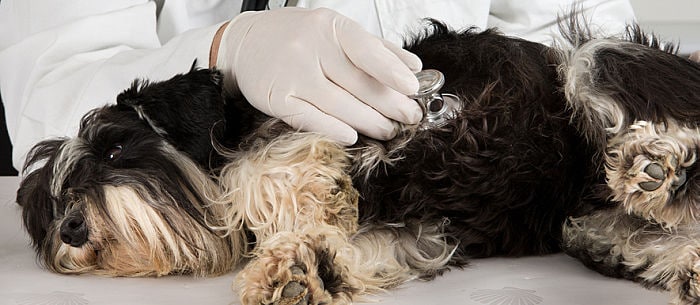It’s a good idea to learn how to perform dog CPR so that you can be well-equipped to handle an emergency situation. Though you hope that you’ll never have to put this training into use, it’s always good to be prepared! Remember that seconds count, so knowing the proper techniques can make all the difference.
Here’s an overview on how to perform dog CPR on dogs of all different sizes:
When Should You Administer Dog CPR?
Like humans, dogs need CPR when they have stopped breathing or their heart has stopped. If your dog is breathing, you should not administer CPR, as this can be harmful. Before you put your training into use, you should make sure that your dog is unconscious and non-responsive.
One way you can tell if CPR is needed is to check your dog’s gum colour. If their gums are turning blue, grey or white, that’s an indication that you need to take action immediately. If your pet is bleeding, you should apply pressure to and bandage the wound, so you don’t increase blood loss with CPR.
Hopefully your dog will start to respond as soon as you perform CPR, but you should still call for medical assistance immediately. In a pet emergency, minutes count. Don’t wait for a pulse.
If your dog isn’t moving, you’re shouting and there’s no response, you should administer CPR quickly. Then, you should put your phone on speaker, dial the vet and let them know you’re on your way.
What Are the Different Types of Dog CPR?
There are three different types of dog CPR, each designed to be used on pets of a certain size. These three techniques all rely on a pattern of 30 repeated chest compressions followed by two mouth-to-snout rescue breaths.
- Taco CPR
It is important to handle smaller dogs and puppies delicately to protect their delicate bones. If you are performing taco CPR, you should cradle your dog in one arm and place your index and middle fingers on their chest, between their front legs. This will help you compress their chest. Then, you should tilt your dog’s head back and roll their tongue forward, past their canine teeth, to open up their airway.
- Side-to-Side CPR
The most common form of dog CPR, side-to-side, is used on dogs that do not have large chests but are too large to cradle. For instance, you would use this technique on terriers and Labradors. Dogs should always be positioned on their right side in side-to-side CPR. Also, you should never perform side-to-side on a bed or other soft surface; a hard floor is best.
If you are performing this particular type of CPR, you should kneel down at your dog’s spine and place your full, open palm on their chest, with your thumb under their armpit and palm facing down. Then, you should open up their airway by forming a right-handed fist, positioned tightly on your dog’s stomach. Kneeling behind the dog with their body flush against you will provide reassurance if there is any consciousness there.
- Barrel-Chested CPR
Barrel-chested CPR is designed for broad-chested breeds, such as bulldogs. If you are performing this technique, you should kneel down next to your dog and place them in the belly-up position. Then, you should cross your hands in an open palm position over your dog’s heart and begin chest compressions.
For all three types of CPR, you should cup your hand around your dog’s entire snout, to form an airtight seal. Then blow into their nose. Blow directly with your whole mouth, to maximize blow pressure. Mouth-to-snout rescue breathing requires more conscious effort than mouth-to-mouth resuscitation for humans. But, as is the case with a human heart, a dog’s heart can stop and start, so you should continue to assess this and stop administering CPR if you detect signs of life.
One important thing to be aware of is your dog’s reaction to having CPR performed on them. A dog who is in pain or confused should be approached carefully, and you should be ready for the possibility that the dog will try to bite. Be careful and prepared as you feel them coming to.
In order to be truly prepared for anything that might happen, you should have emergency telephone numbers readily accessible at all times. If you use a dog sitter, you should provide them with a pre-written letter of authorisation, a method of payment and instructions to use for your dog’s care in your absence.
